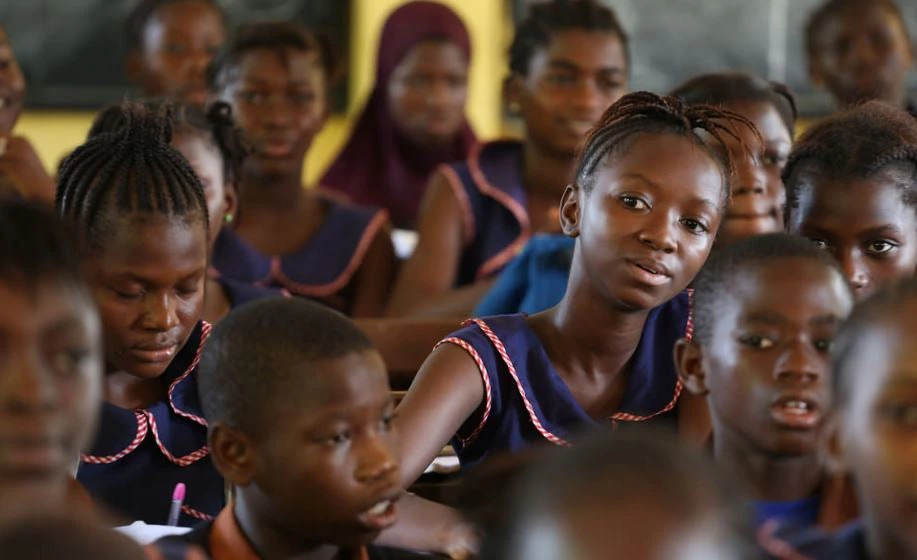
A UNESCO report estimates that one in ten girls in Sub-Saharan Africa misses school during their menstrual cycle. By some estimates, this equals as much as twenty percent of a given school year.
Many girls drop out of school altogether once they begin menstruating. Should young women miss twenty percent of school days in a given year due to a lack of facilities or a lack of information or a lack of sanitary products?
Menstrual Hygiene Management
The solution lays in Menstrual Hygiene Management or MHM. It’s the access to adequate information, preparation, and support with which to manage menstruation in a healthy, safe, and dignified manner.
We should care about MHM because it can further social and economic empowerment and growth. It can also contribute to achieving a number of the Sustainable Development Goals (SDGs) including, though not limited to: quality education (SDG 4), gender equality (SDG 5), and clean water and sanitation (SDG 6).
Across the World Bank, our colleagues who are working on water & sanitation, health, education, social enterprise, and gender are working together to advance MHM within our operations. We are exploring interventions that can work to improve access to sanitation facilities, improve hygiene awareness, and address girls’ absence from school.
Trials in Ghana
It is estimated that 11.5 million women in Ghana lack hygiene/sanitation management facilities that adequately separate waste from human contact. According to the latest UNICEF water and sanitation in schools monitoring report, 59 percent of primary schools in Ghana have adequate water and 62 percent have adequate sanitation.
In Ghana, a randomized control trial (RCT) is being planned against the context of the school WASH component of the Greater Accra Metropolitan Area (GAMA) Sanitation and Water Project. The objective is to secure evidence on the impact of MHM informed WASH on girl’s education. For the planned RCT, four study arms will be deployed:
- a set of schools with no intervention at all as the control;
- a set of schools with MHM enabled WASH facilities alone; (separate toilets for girls and boys, doors with locks, access to socially acceptable disposal facilities, access to water for washing near the toilets, and space for changing).
- a set of schools with menstrual hygiene education only; and
- a set of schools with menstrual hygiene education combined with MHM enabled WASH facilities.
World Bank collaboration and country engagement reflects a growing demand for MHM
In 2015, the government of India launched National Guidelines on Menstrual Hygiene Management to respond to nearly 113 million adolescent girls’ at risk of dropping out of school due to the start of menarche (their first period). One of the surveys that informed the National Guidelines found that in 14,724 government schools only 53 percent had a separate and usable girl’s toilet. In addition, 132 million households reported not having a toilet.
Bringing greater visibility to and acting on MHM
Academics, universities, non-governmental organizations, international organizations, and the private sector have come together with young women and communities around the world to promote visibility and action on this often taboo topic. Here are some examples.
In April 2016, during a Let Girls Learn event at the World Bank, United States First Lady Michelle Obama spoke directly to how menstruation can stop girls from attending school and how this issue must be addressed to enable young women to continue their education.
UNICEF, UNGEI, Emory University, and the government of Canada partnered to create the WASH in schools for girls e-course: Increasing national capacity to conduct research on menstrual hygiene management in schools.
WASH United, led this year’s international Menstrual Hygiene Management Day, on May 28. The international day, launched in 2014, drew over 300 events this year and was held around the world to raise awareness and further action.
World Bank action
Since last year, the World Bank working group on MHM met with social enterprises addressing access to sanitary products and MHM. One such visit is captured in a World Bank blog post by Jaydeep Mandal, Founder and Managing Director of Aakar Innovations, a social enterprise based out of India. As Mandal details, Aakar Innovations is not only providing women access to affordable and eco-friendly menstrual hygiene products or creating livelihood opportunities for women, but also working to break the silence surrounding menstruation.
What Kenya can teach us about menstrual pads
Another social enterprise, ZanaAfrica, operates out of Kenya. ZanaAfrica was founded to respond to the reality that nearly one million girls in Kenya do not go to school because they lack access to sanitary pads and corresponding reproductive health education. ZanaAfrica takes a three-prong programmatic approach to supporting girls: (i) creating health education, (ii) delivering pads and education through local partners, and (iii) leading policy and advocacy. To read more about ZanaAfrica, check out this recent National Public Radio feature.
It’s important to support Aakar Innovations, ZanaAfrica, and dozens of social enterprises working to bring sanitary products and health education to women around the world. Going forward, the World Bank will continue advancing and supporting MHM efforts to ensure that young women are seen and empowered through a holistic and inclusive approach.
Young girls and women must have access to sanitary products, accurate information regarding their own menstrual health, and should no longer feel shame or stigma when menstruating. The next time MHM is mentioned, you will not only know what it means but why it matters.
Visit the World Bank’s website on girls’ education.
Find out more about the World Bank Group’s work on education on Twitter and Flipboard.





Join the Conversation